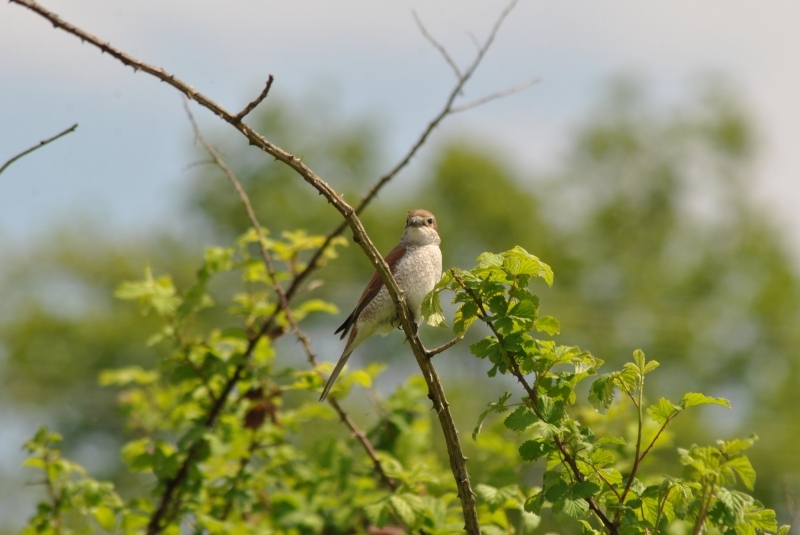The easiest way to find the proof for high biodiversity in the Goričko Nature Park is just to simply see some meadow in a may or a june, when most of meadow plant species are blooming and all polinators, buterfllies and other insects, as well as other animals like amphibians, birds and mamals, are fully active. This imense biodiversity is also complemented with life in hedges, which are common on the edges of meadows or fields.
MEADOWS
Meadows are among oldest semi-natural habitats in Goričko Nature Park, which would have not existed without human activity. To reach their full biodiversity potential, a traditional extensive maitenance is needed. However, not all environment conditions on Goričko are the same, therefore there are also different types of meadows here.
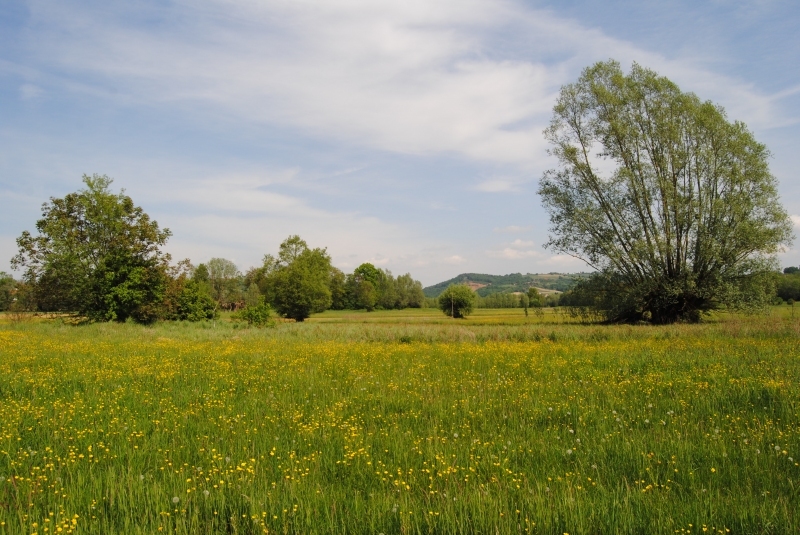
Meadows are semi-natural habitats. Their existence depends on human activity  M. Podletnik
M. Podletnik
On permeable, sandy and gravel surfaces, where soils are poor with nutritients and acidic are so-called dry meadows. For these meadows is tipical, that the meadow plants are relatively rare and do not grow to big heights, but they have a good roots systems. On very dry and acidic parts, only moss and lichen patches can be found. Because of little amount of grass, these meadows were mowned only once or twice a year. However, hard growing conditions create habitat that is known for typical plant species. Most of them are blooming at the same time, this is why these meadows are known to be very colorful. Among dry meadows are important Natura 2000 Goričko habitats Semi-natural dry grasslands and scrubland facies on calcareous substrates (Festuco-Brometalia) (*important orchid sites) (HT 6210).
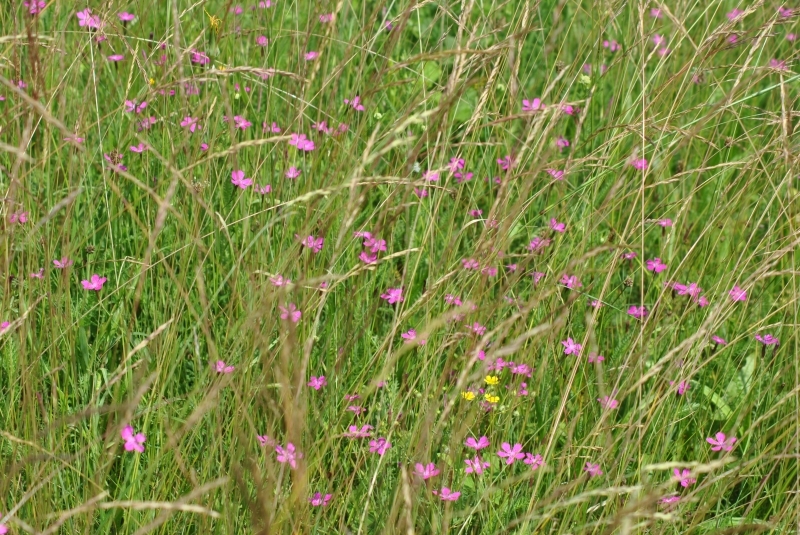
Dry meadows are habitat for maiden pink, which blooms in summer months  M. Podletnik
M. Podletnik
On less permeable sediments, which are ussualy on the bottoms of the valleys, are different growing conditions. Water here occasionaly stagnates, so the plants have enough moist throught the entire year. Plants are therefore higher and denser as on dry meadows. Soils here are also poor with nutritients, so farmers often fertilize meadows with mineral or organic fertilizers. Additional nutritients are changing growing conditions and also botanical composition. Several plant species can therefore dissapear from meadows as well as many of animal species that have connection to certain plant species in their life cycles. Among so called wet meadows are two types of Natura 2000 habitats. First one are Moor-grasses or so called Molinia meadows on calcareous, peaty or clayey-silt-laden soils (Molinion caeruleae) (HT 6410), second are wet hay meadows or so called Lowland hay meadows (Alopecurus pratensis, Sanguisorba officinalis) (HT 6510).
First one are typical for low areas near waterways, where water stagnation occurs often. Typical plant species are Purple Moor-grass (Molinia caerulea usbs. caerluea) and Tall moor-grass (Molinia caerulea ssp. arundinacea), Tufted hair-grass (Deshcampsia caespitosa), Devils-bit (Succisa pratensis), Tormentil (Deschampsia cespitosa) and Sneezewort (Achillea ptarmica). Special colorfulness add Siberian iris (Iris sibirica), Yellow iris (Iris pseudacorus), Marsh gentian (Gentiana pneumonanthe) and Yellow Day-lily (Hemerocallis lilioasphodelus).

Moor-grasses are located near waterways and can be occasionaly flooded  M. Podletnik
M. Podletnik
Wet hay meadows are probably the most common type of meadows in Goričko Nature Park. They are located on small slopes near valley floors, where there is enough moist in the soil, but water stagnation is not frequent. Grass is high and dense, meadows are mowed twice or three times per year.The plant diversity here is very high, these meadows are also known for very colorful appearance. The typical grass species are False oat-grass (Arrhenatherum elatius), Meadow foxtail (Alopecurus pratensis), Meadow fescue (Festuca pratensis agg.), Rough Meadow-grass (Poa trivialis) and others. The colorful appearance are creating Spreading bellflower (Campanula patula), Ragged-robin (Lychnis flos-cuculi), Creeping buttercup (Ranunculus repens), Great burnet (Sanguisorba officinalis), Field scabious (Knautia arvensis), Creeping-Jenny (Lysimachia nummularia) and others.
 Meadow with foxtail, false oat-grass and ragged-robin in May
Meadow with foxtail, false oat-grass and ragged-robin in May  M. Podletnik
M. Podletnik
HEDGES
Hedges are important part of Goričko landscape. With their position at the edges of meadows or fields they work as bridge between different habitats. They have also important role as mitigators of effects of extreme weather conditions and prevent damage from soil erosion, drought, hail and strong wind.
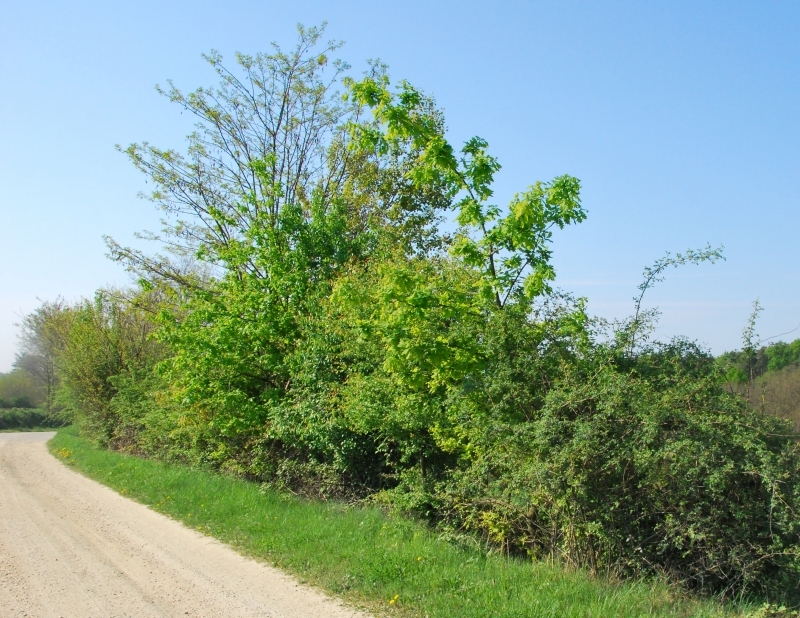 Typical hedge
Typical hedge  G. Domanjko
G. Domanjko
The vegetation of hedges is composed mostly with bushes species like Blackthorne (Prunus spinosa), Woodland (Crataegus laevigata) and Common hawthorn (Crataegus monogyna), Blackberry (Rubus fruticosus), Dog rose (Rosa canina), Common spindle (Euonymus europaeus) and others.
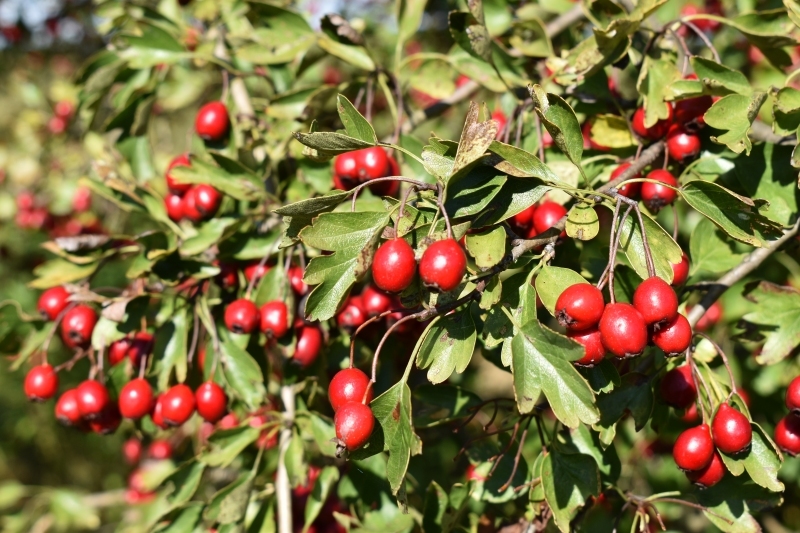 Hawthorn is recognisable by its red fruits
Hawthorn is recognisable by its red fruits  M. Podletnik
M. Podletnik
The hedges are great hunting spot for several bird species, one of the most typical are Red-backed shrike (Lanius collurio), Common blackbird (Turdus merula), European robin (Erithacus rubecula), Eurasian blackcap (Sylvia atricapilla) and a Yellowhammer (Emberiza citrinella). Under bushes are hiding spots for Common pheasant (Phasianus colchicus), European hedgehog (Erinaceus europaeus), European green lizard (Lacerta viridis) and other animals.
Red-backed shrike (female) is typical representative of diverse cultural landscape with lots of hedges  M. Podletnik
M. Podletnik

![]() M. Podletnik
M. Podletnik




